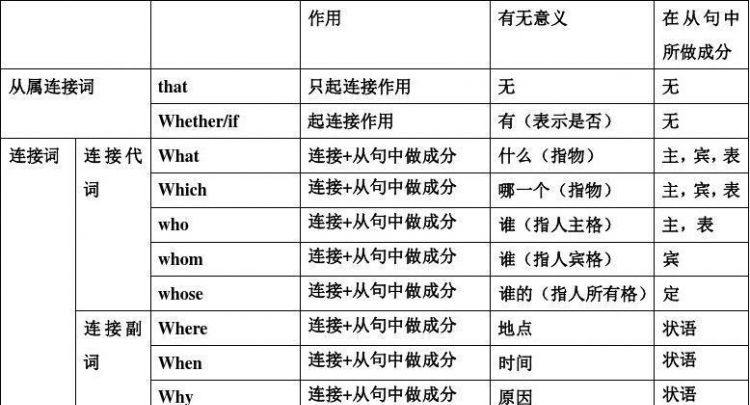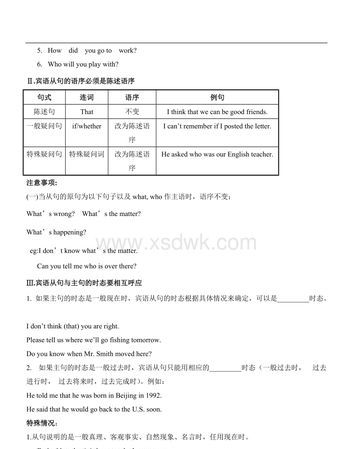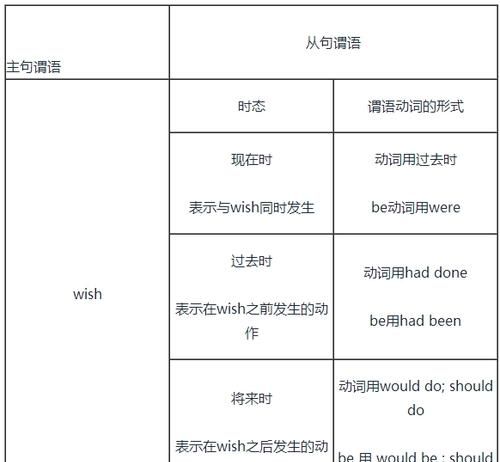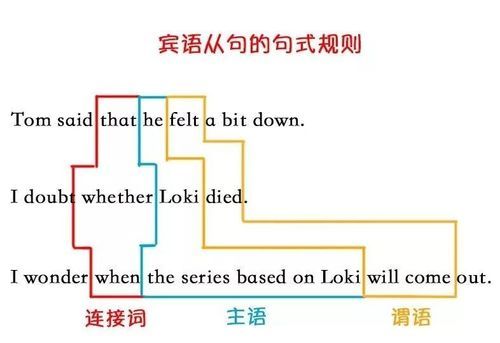本文目录
宾语从句主句和从句时态一致或者是什么时候一致什么时候不一致 不要一超一大堆
一致性
1、主句的时态(一般现在时,现在进行时,现在完成时);从句根据实际情况确定时态
2、主句:过去时态(一般过去时,过去进行时);从句:过去时态(一般过去时,过去将来时,过去完成时)
不一致性
1、主句的谓语动词与从句的谓语动词同时发生,从句的谓语动词用一般过去时或过去进行时
例如:He said he worked in a factory.
My brother told me father was writing a letter then.
2、从句的谓语动词发生在主句谓语动词之前,从句的谓语动词用过去完成时
例如:He said he had seen the film before.
3、从句的谓语动词发生在主句谓语动词之后,从句的谓语动词用过去将来时,过去将来进行时,过去将来完成时
例如:He said he would go with us.
He said he would be visiting a freind of his the next morning.
He said he would have learned 3000 Enlish words by the end of this term.
4、如果宾语从句表示的是一般真理,就不受时态呼应的限制.

宾语从句时态一致原则的微课
主句是一般现在时从句根据句子可以用不同的时态。
主句是一般过去时,从句要用相应的过去时态,除了客观真理外。
He says that he will go to Beijing.

宾语从句三要素
宾语从句三要素宾语从句,即:在主句中担当宾语的从句。学习宾语从句要抓住三要素:连接词、语序和时态。
连接词一般都是that(指事务或人),which(指事),who(指人)
1.从句为陈述句,常选择连接词that或将that省略,直接与主句相连。
2.从句为一般疑问句,常选择连接词if或whether。在whether…ornot结构中不能用if替换。
3.从句为特殊疑问句,常选择what,when,where,which,who,how等的疑问代、副词作连接词。
注意:当who为主语时,句式为:who+谓语+其他三:判断时态情况:
1。主句是一般现在时,从句为各种时态情况
2。主句是一般过去时,从句为各种相应过去时态注意:从句描绘客观事实,用一般现在时
1.
The
teacher
told
the
children
that
the
sun____
round.
A.
was
B.
is
C.
were
D.
are
2.
I
believe
that
our
team____
the
basketball
match.
A.
win
B.
won
C.
will
win
D.
wins
3.
I
don’t
know____
to
visit
the
old
man.
A.
whether
B.
if
C.
that
D.
who
The
soldiers
soon
reached(
)was
once
an
old
temple(
)the
villagers
used
as
a
school.
A.which;where
B.what;which
C.where;which
D.what;where
答:选B,动词reach后接宾语从句,从句缺少宾语,where不可,which引导宾语从句时表疑问含义“哪一个…”而此句中并非疑问含义,不知道哪一座庙宇,而是用what从句表陈述含义,意“过去的一座旧庙宇”;temple后为对其修饰的定语从句,用关系代词which代替,并在从句中作动词used的宾语,use
sth.
as…“把…用作…
whether
+
or
not
宾语从句,在复合句中作宾语,位于及物动词后;
eg.
Tell
him
which
class
you
are
in
.
Do
you
know
what
he
likes?
注:(1)主、从句时态一致:
主句谓语过去时,从句相应过去时;
He
answered
that
he
was
listening
to
me.
主句谓语现在时,从句时态任所需;
eg.
He
says
(that)
he
will
leave
a
message
on
my
desk.
They
know
(that)
he
is
working
hard.
具体过去永不变,真理格言现在时;
eg.He
told
me
that
he
was
born
in
1980.
Father
told
me
that
practice
makes
perfect
.
(2)否定前移,及完成反意问句;
在think
/
believe
/
suppose
/
guess
/
imagine
/
expect等动词后跟宾语从句否定式时,应转移到主句上去,完成反意问句时,应与从句主、谓保持一致。(注:
否定前移的条件是,主句主语是第一人称)
eg.
I
don't
think
you
are
right
,are
you
?
I
don't
believe
they
have
finished
their
work
yet,have
they
?
(3)在表示建议
suggest
,
advise
要求demand
、desire、require、request、propose;
决定
decide;
命令
order、command;
坚决主张
insist;
等动词后跟宾语从句,用(should)+v.(虚拟语气)
eg.
I
suggested
that
you(should)study
hard.
He
ordered
that
we
should
go
out
at
once.
(4)如果宾语从句后有宾语补语,用it作形式宾语,把宾语从句后置
eg.You
may
think
it
strange
that
he
would
live
there.
(5)宾语从句that常可省略,但在以下情况下不能省略
A.当主句谓语动词带有两个或两个以上宾语从句时,可以省略第一个that,其他不能省略。
eg.I
believe(that)you
have
done
your
best
and
that
things
will
get
bet?鄄ter.
B.当it作形式宾语时
eg.She
made
it
clear
that
she
had
nothing
to
do
with
him.
C.当宾语从句前置时
eg.That
our
team
will
win,I
believe.

宾语从句
一般规律是主句的宾语动词和宾语的谓语动词保持时态的一致,即主句谓语为过去式时,宾语从句的动词也为过去时.但是有例外情况,当某个人陈述意见事实时即使主句主语为过去时宾语从句谓语动词也用一般现在式,你说的例句就是这种情况。tom 叫做什么名字是一种事实。应该是He said his name is Tom 。又如“他曾经说过天上只有一个太阳。”He said that there is only a sun in the sky.

以上就是关于宾语从句的谓语动词和谁保持一致 ,宾语从句的全部内容,以及宾语从句的谓语动词和谁保持一致 的相关内容,希望能够帮到您。
